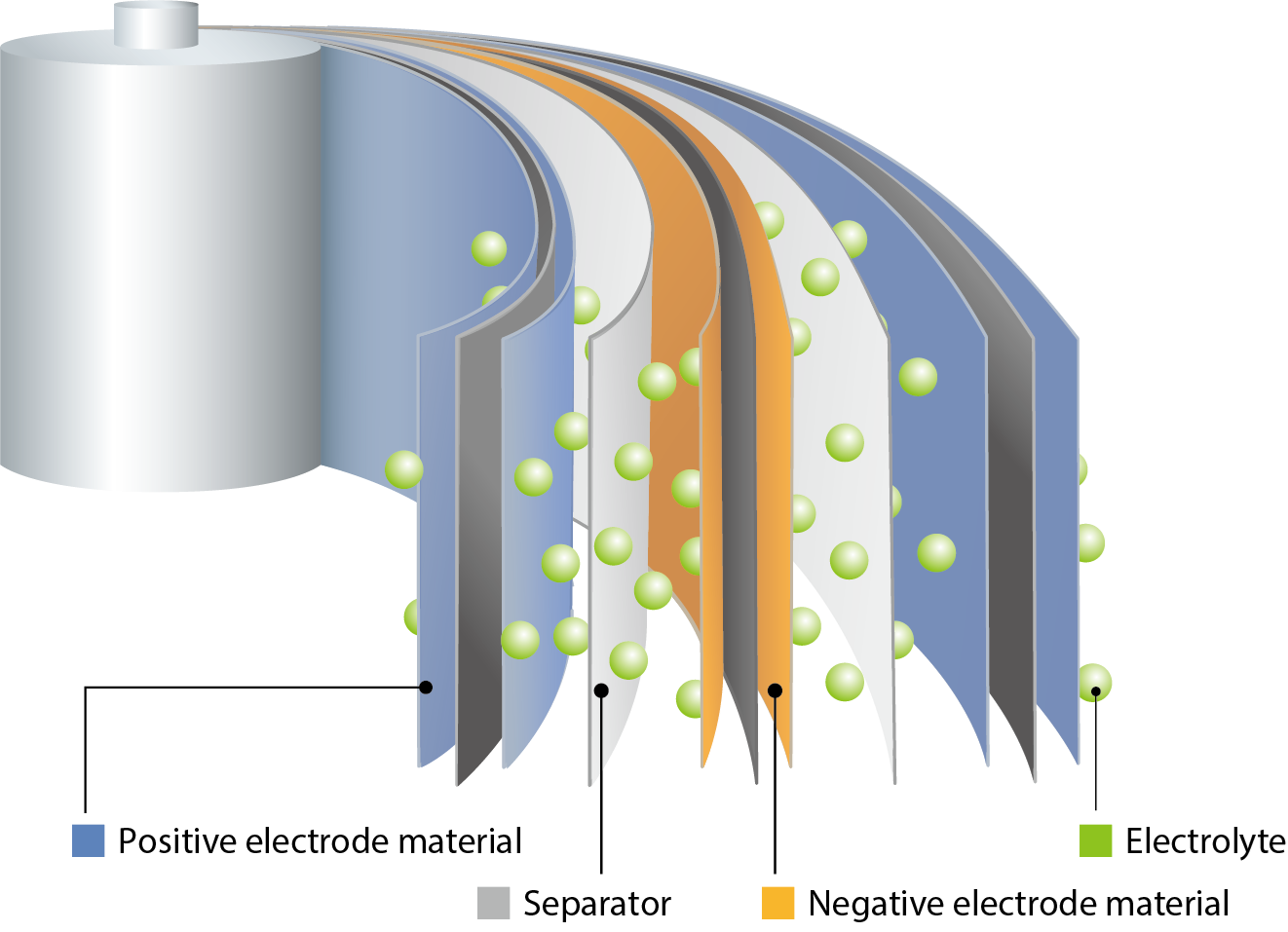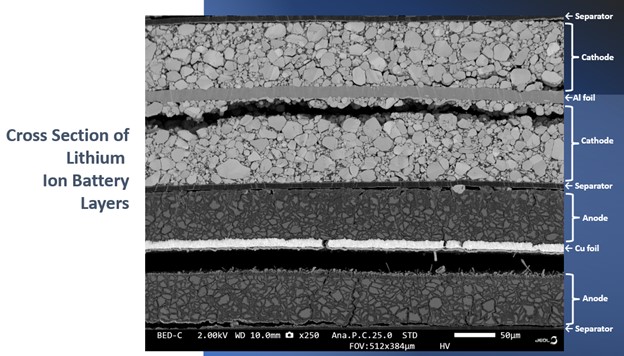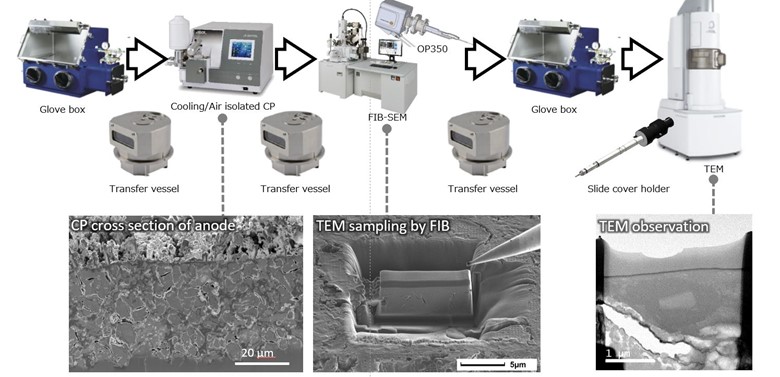The drive is on to improve the performance of Lithium-ion batteries, particularly to increase energy density, life cycle, and safety. However, during development and assessment of their performance, lithium-ion batteries can present unique challenges for characterization and analysis using electron microscopy.
The basic structure of Lithium-ion batteries (LIB) contains as many as 10 different thin films and at least that many solid−solid interfaces. These interfaces consist of thin layers of cathode material, insulating barriers, anode materials, metal current collectors, and the electrolyte. These various components are in the form of powders, sheets, and fluids and require assessment before and after assembly and after repeated charge/discharge operations. Researchers who are correlating electrochemical behavior to what is physically happening within the cell need to study the 3D microstructure of the battery components as well as the interfaces formed between those layers.


The efficiency of batteries and fuel cells is governed by the diffusion of ions, the transport of electrons and the chemical interactions of electrode/electrolyte materials. Engineers can routinely characterize the structure and properties of components that shed light on their behavior during electrochemical processes, including ion relocation, lattice expansion or contraction, phase transition and surface reconstruction.

However, since materials containing Li are reactive in ambient environments, being able to prepare, image, and analyze samples without exposing them to the atmosphere becomes vitally important. For that purpose, JEOL has established an
air-isolated workflow from sample preparation using ion beam milling, to characterization and elemental analysis in the Scanning Electron Microscope (SEM) or
Transmission Electron Microscope (TEM), without exposing the specimen to the atmosphere. JEOL ultrahigh resolution
Field Emission SEMs, equipped with our new
Gather-X Windowless EDS, detect ultra-low energy elements such as lithium (with Li K line of 54 eV) . Analyzing lithium and other light elements requires low kV imaging and analysis and often high beam current achievable in JEOL’s multipurpose or analytical high resolution SEMs.
Learn more about JEOL's air-isolated workflow, pristine sample preparation of sensitive samples, and high resolution imaging and analysis solutions at
https://go.jeolusa.com/EM-LIB.